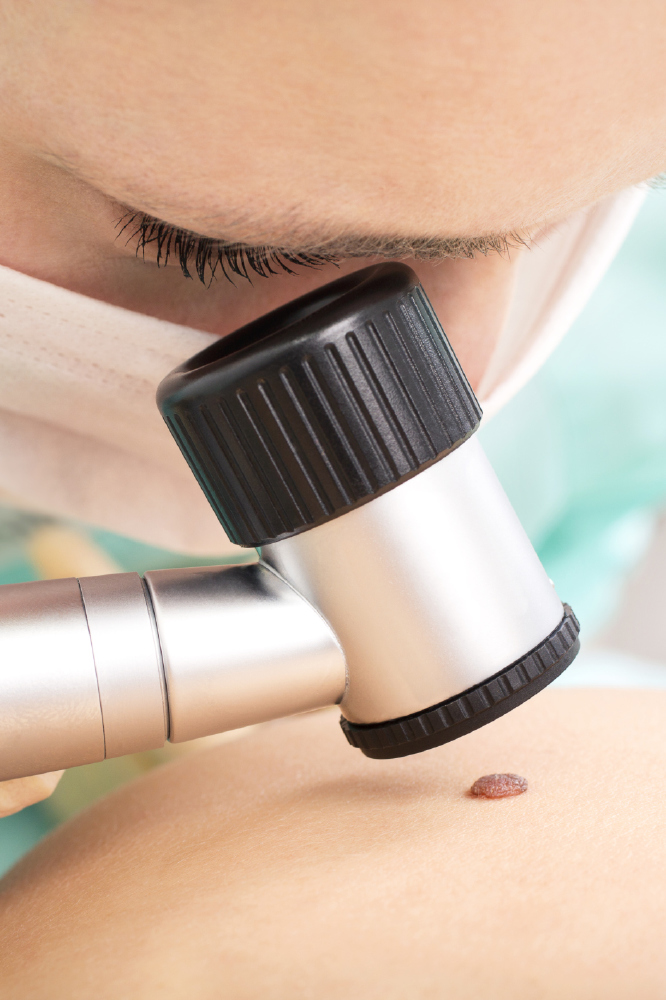
Do you know what to look for to spot skin cancer?
Just off the back of Sun Awareness Week and the fact we’re expecting plenty of sun this weekend, it’s important we know how to spot the changes with our skin.
Skin cancer is one of the most common cancers in the world with the number of people diagnosed with the disease rising an average of five per cent each year. Over 100,000 new cases of Skin cancer were diagnosed last year, so understanding the signs and symptoms and knowing how to stay safe in the sun is becoming increasingly important.
Joanne Upton, Skin Cancer Advanced Nurse Practitioner at The Clatterbridge Cancer Centre, based in Merseyside, talks to Female First about everything you need to know about skin cancer.
“There are two types of skin cancer: malignant melanoma, which is less common but more serious; and non-melanoma skin cancer, which is very common but not so serious.
“Non-melanoma skin cancer is the most common form of the disease, about 90 percent of non melanoma skin cancers are associated with exposure to ultraviolet (UV) radiation from the sun. The good news is that this form of skin cancer is highly curable, if diagnosed early enough. With this in mind, it’s vital that people are aware of what to look out for and most importantly, ensure they’re getting checked out by their GP if they are worried about anything at all.
“Non-melanoma cancers appear in two types – basal cell carcinoma and squamous cell carcinoma. Things to look out for with basal cells are smooth and pearly marks, which may look waxy or firm, or red lumps which sometimes bleed and then develop a crust or scabs and begin to show signs of healing, but don’t fully go away. Squamous cell cancers can look a little different and may be firm red nodules, which look scaly and can sometimes bleed and be tender to touch.
“Both types of non-melanoma skin cancer often develop in areas that have been damaged by exposure to the sun when detected early, they are highly curable. They are mainly found on the face, neck, bald scalps, arms, backs of hands and lower legs.
“Malignant melanoma skin cancers are a little different and the nature of this form of the disease means it can spread much quicker, so getting any abnormalities checked out as early as possible is critical – half of these cancer cases start in normal-looking skin so it’s something patients should hopefully be able to pick up on quite quickly. Melanoma can grow very quickly. It can become life-threatening in as little as six weeks and, if untreated, it can spread to other parts of the body. It can appear on skin not normally exposed to the sun.
“It can be difficult to tell the difference between a melanoma and a normal mole so we use the ABCDE rule at The Clatterbridge Cancer Centre to help best inform patients as to how they can monitor skin changes:
Asymmetry – Melanomas are likely to be irregular or asymmetrical. Ordinary moles are usually symmetrical (both halves look the same).
Border – Melanomas are more likely to have an irregular border with jagged edges. Ordinary moles usually have a well-defined, regular border.
Colour – Melanomas tend to be more than one colour. They may have different shades, such as brown mixed with a black, red, pink, white or bluish tint. Normal moles tend to be one shade of brown.
Diameter (width) – Melanomas are usually more than 7mm in diameter. Moles are normally no bigger than the blunt end of a pencil (about 6mm across).
Evolving (changing) – Any change — in size, shape, color, elevation, or another trait, or any new symptom such as bleeding, itching or crusting — points to danger.
Tagged in Health Skin Cancer

